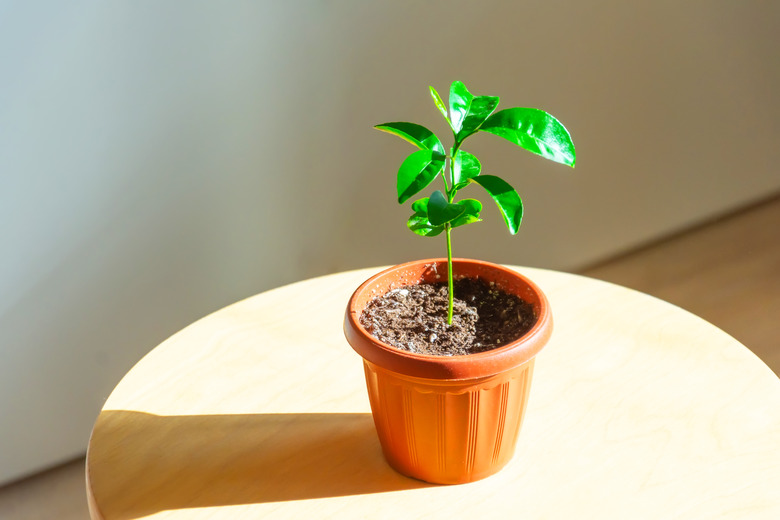How To Bonsai An Orange Tree
We may receive a commission on purchases made from links.
Bonsai is a process of dwarfing a tree through root and limb pruning and judicious application of water and fertilizers. With proper technique, almost any tree can be turned into a bonsai, including orange trees. Orange trees (Citrus sinensis, USDA zones 9-11) are not tolerant of cold air and must be kept indoors in cool months in northern climates. If given proper care, a bonsai orange will bear fruit just like its full-size counterparts.
How to Bonsai an Orange Tree
1. Choose a Healthy Sapling
Select a healthy orange sapling — one that has healthy roots and no broken limbs. Almost any orange tree will make a good bonsai. Potted citrus trees such as calamondin (Citrus x microcarpa, zones 10-11) or hardy oranges, such as trifoliate orange (Poncirus trifoliata, zones 5-9), which is not a true orange, adapt well to bonsai container culture.
2. Decide on the Shape
Determine which style of bonsai shape the orange tree will get. Orange trees naturally have an upright shape that makes them a good for the formal or informal upright styles of bonsai. Other shapes for bonsai include slanting, cascade and semi-cascade.
3. Prune Roots and Plant Tree
Rinse the soil from the tree's root ball and prune away about one-third of the tree's roots. Decide which direction will be the front of the tree. Shape the tree so that it will look appropriate when viewed from that side. Bonsai trees typically are shaped so that they have an asymmetrical appearance with alternating branches. Plant the tree in a container with bonsai potting soil or a citrus potting mix. Leave the tree in this container for one year before transplanting it into a bonsai container.
4. Wrap and Bend the Tree
Wrap the trunk of the tree loosely in a clockwise pattern with annealed copper wire to avoid damaging the bark. Bend the tree gently into shape, but stop before the breaking point. If the tree will not bend completely, wait until it naturally assumes the new shape and try again. Loosen the wire when the tree grows to the point that the wire is almost tight. Once the tree grows naturally into the desired shape, remove the wire completely.
5. Prepare the Potting Soil
Prepare potting soil for the final transplant, using a commercially packaged citrus potting mix. Grade the soil using a series of bonsai sieves with smaller and smaller holes. Discard any soil that will pass through a sieve with holes in it that are the size of window screening. This type of soil will form a clay that can block water from reaching the roots.
6. Anchor the Tree
Thread electrical wire through the holes in the bottom of the potting tray. These will be used to anchor the tree in place. Place a mesh screen in the bottom of a bonsai tray. Pull the wire through two of the holes in the screen. Put a layer of the largest bonsai pebbles caught in the largest sieve into the tray, and add a layer of loam from the second sieve on top of the pebbles.
7. Trim the Branches
Trim back the branches of the bonsai orange one week before transplanting. Cut back the orange tree limbs to the size that they were before planting the tree in the first pot.
8. Trim Roots Before Replanting
Lift the tree from the pot and tease out the roots gently with your fingers. Cut back the roots so that only the primary roots and the tiny feeder roots that emerge from them remain.
9. Anchor Tree and Plant
Place the citrus tree in the bonsai potting tray. Wrap electrical wire around the roots to hold the tree upright and in place. Work soil around the roots with a chopstick, starting with the soil in the next smallest size sieve and working outward. Cover the tray with moss when you have finished.
10. Water the Tree Appropriately
Check the tree daily by inserting a finger 1 inch into the soil. Water with a turkey baster to avoid overwatering when the soil is dry to the touch.
